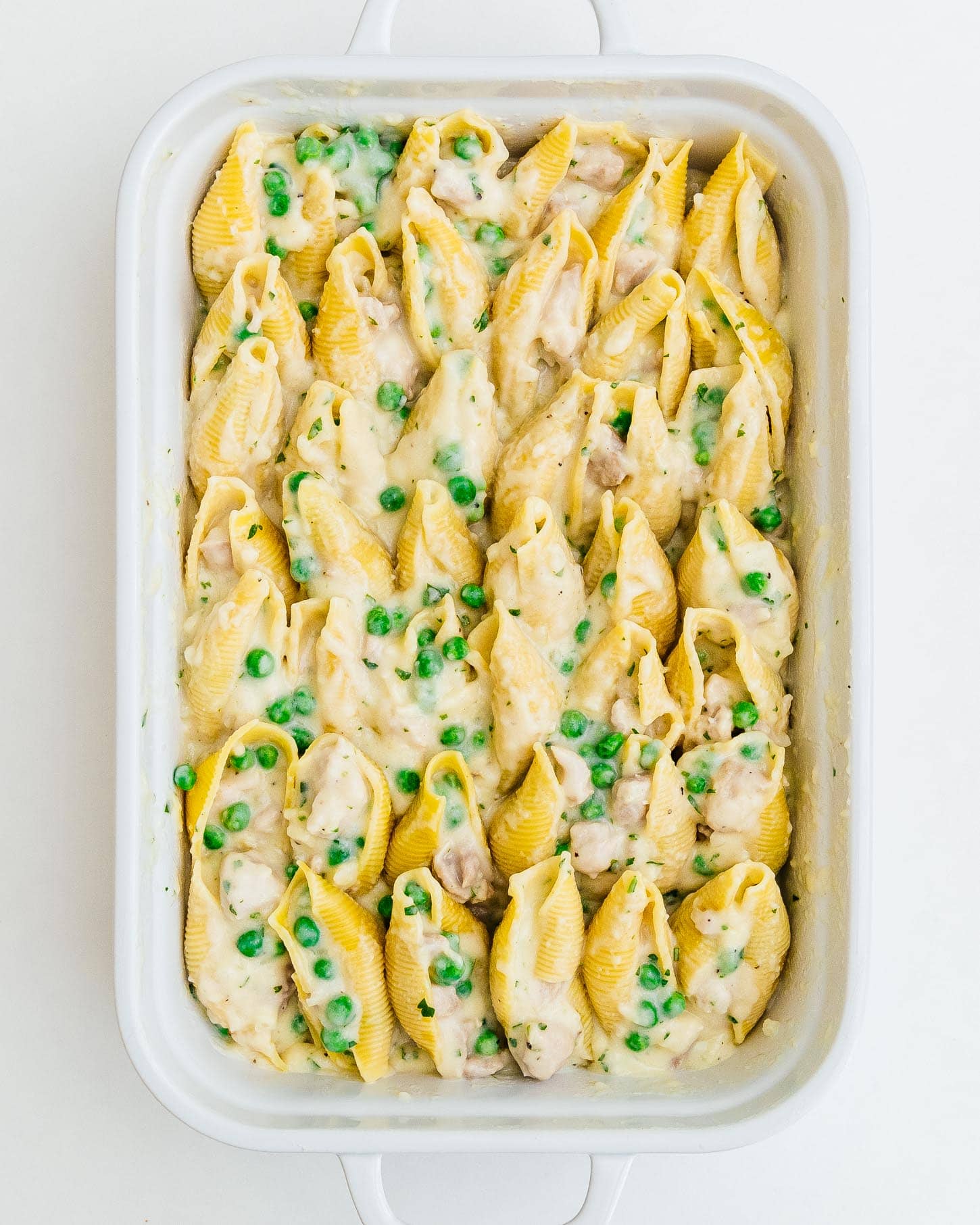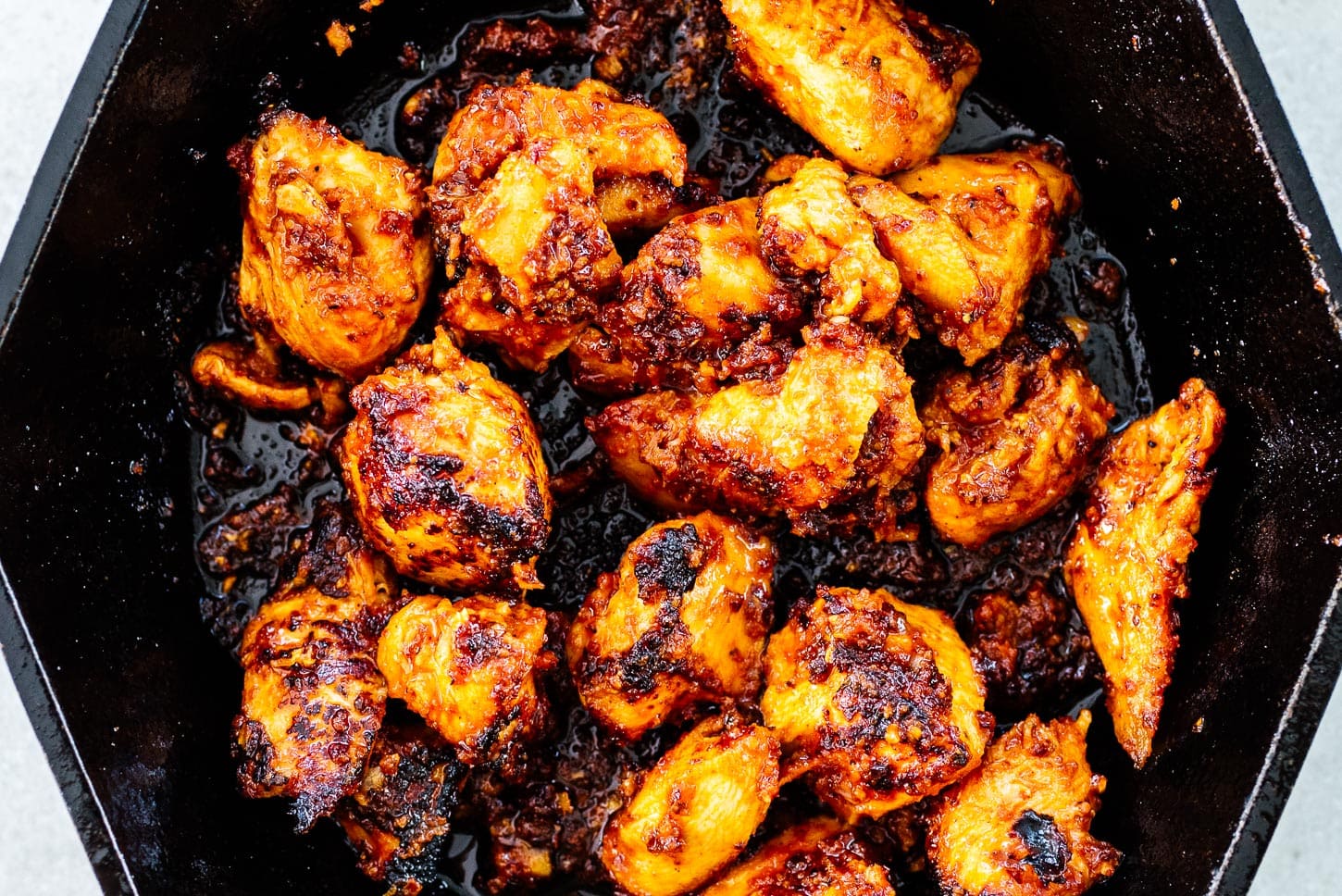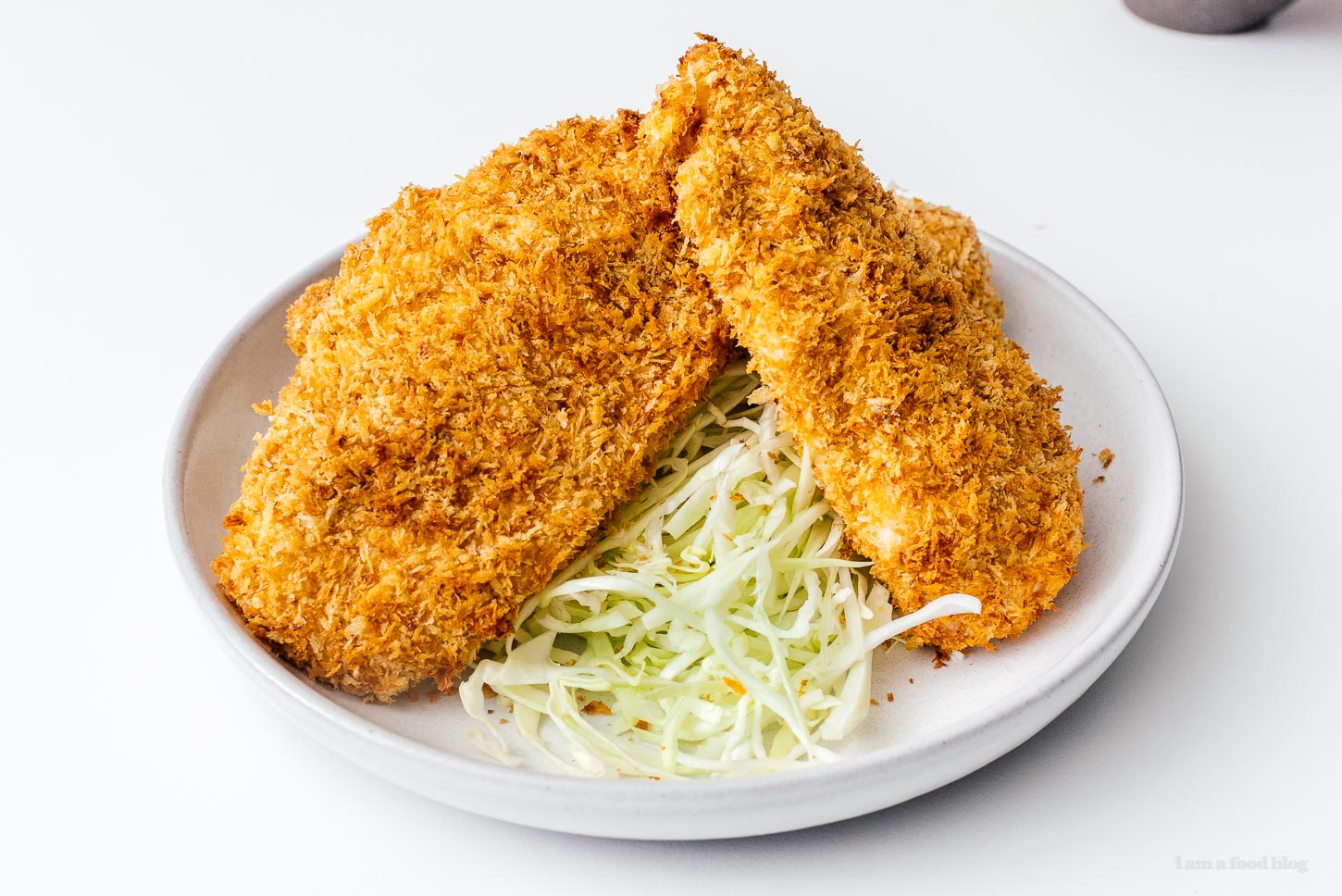
Chicken katsu has got to be one of my all time favorite things to make and eat. It’s like shake and bake chicken but holy heck, so much better!
Juicy, tender chicken, with crispy panko breadcrumbs on the outside, fluffy rice and crunchy cabbage?! Dream meal! Almost every culture has a breaded chicken cutlet and I love them all but chicken katsu has a special little katsu shape in my heart.
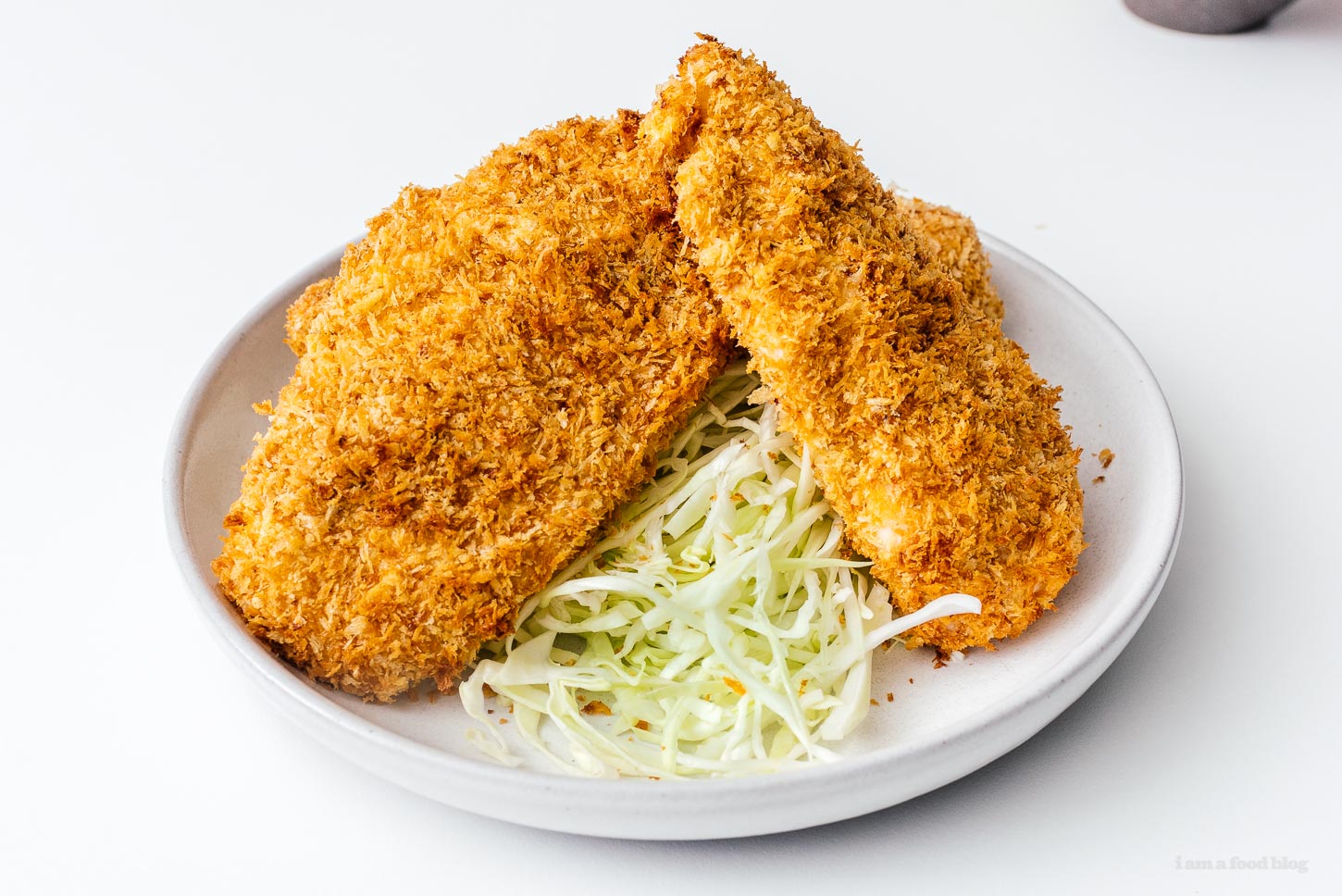
What is katsu?
Katsu is a Japanese transliterated word, meaning cutlet. It comes from tonkatsu (pictured below), which is a pork cutlet, but there are also all other kinds of katsu, which has turned into a term for panko breaded items. You can find tofu katsu, beef katsu, and of course, chicken katsu.
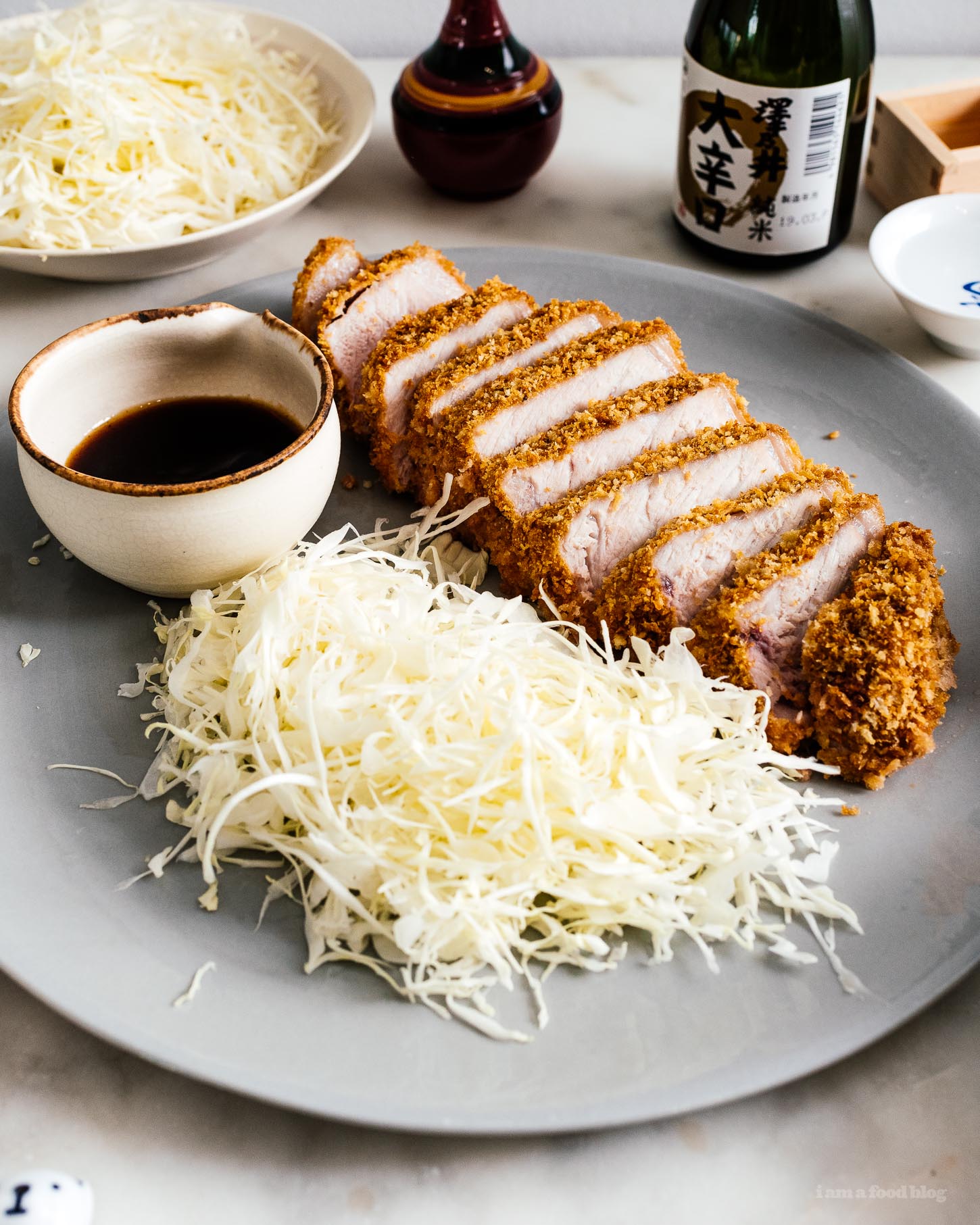
How to make chicken katsu
- Prep the chicken cutlets. Lightly pound the chicken so that it’s about 1/2 inch thick. This helps it cook more evenly. Season both sides with salt and pepper.
- Flour. Dip the chicken in flour, shaking off any excess.
- Egg. Dip the chicken in the egg, coating both sides, shaking off the excess.
- Panko. Press the chicken into the panko, making sure the panko coats all of the chicken.
- Cook. Air fry, bake, or deep fry the chicken katsu.
- Enjoy! Slice, serve with rice, cabbage, sauce, and enjoy.
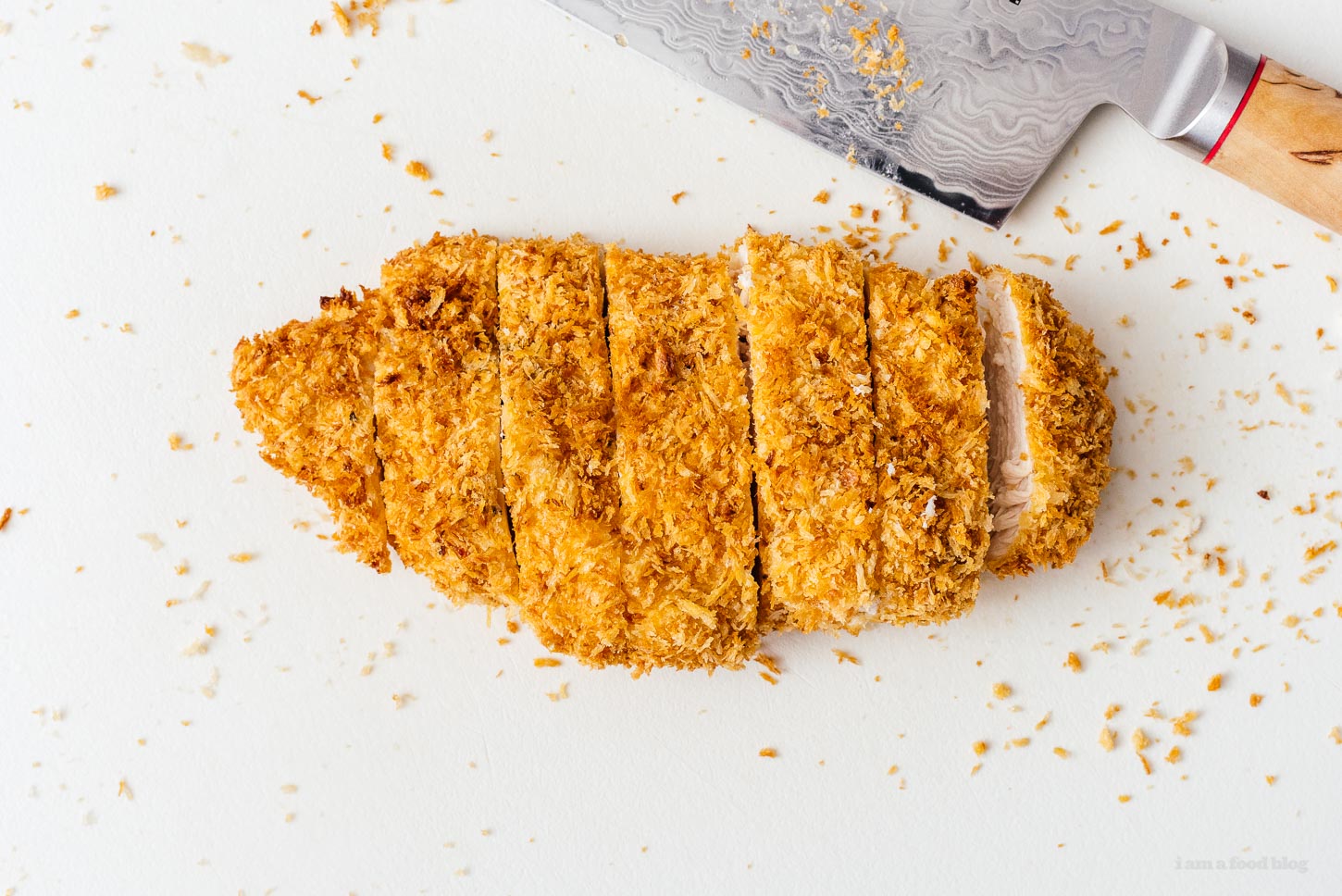
Katsu in Japan
Japan has dedicated tonkatsu restaurants that focus on pork cutlets, along with seafood like ebi fry (panko deep fried shrimp) or kaki-fry (panko deep fried oyster). There are also katsu-sando which are pork cutlet sandwiches. Chicken katsu is not as popular as its pork counterpart in Japan but it’s insanely popular all over the world, probably because it’s very similar to chicken tenders or chicken schnitzel.

How is katsu served?
Katsu can come as part of a set meal (teishoku), as a rice bowl (donburi), with curry (curry katsu), or as a sandwich (katsu-sando). The most common is a teishoku set, where it’s served with rice, cabbage, pickles, and sauce.

Best chicken to use
You can make chicken katsu with either boneless skinless chicken breast or boneless skinless chicken thighs. Either way, you’ll want to lightly pound the chicken so that it isn’t too thick.
Chicken vs Pork
Which is better? Well, pork is the more traditional of the two, but pork can get overcooked pretty easily and you need to source just the right fattiness and thickness in order to get an authentic tasting katsu,whereas chicken pretty much almost always ends up great. In my books, pork from restaurants, chicken at home is the clear choice!
What is panko?
Panko are Japanese breadcrumbs. They’re vastly different from regular breadcrumbs – fluffier, larger, and made from crustless white bread. The irregular flakes of panko are what make katsu so crunchy. They’re dryer, flakier, and absorb less oil.
Panko is actually super interesting and a big deal in Japan. Dedicated panko factories bake bread to different panko specifications. You can get fresh panko, dried panko, and different sized flakes. They even have different ways of baking the bread, either oven baked or electrically baked using currents. A lot of restaurants get fresh panko delivered to them daily.
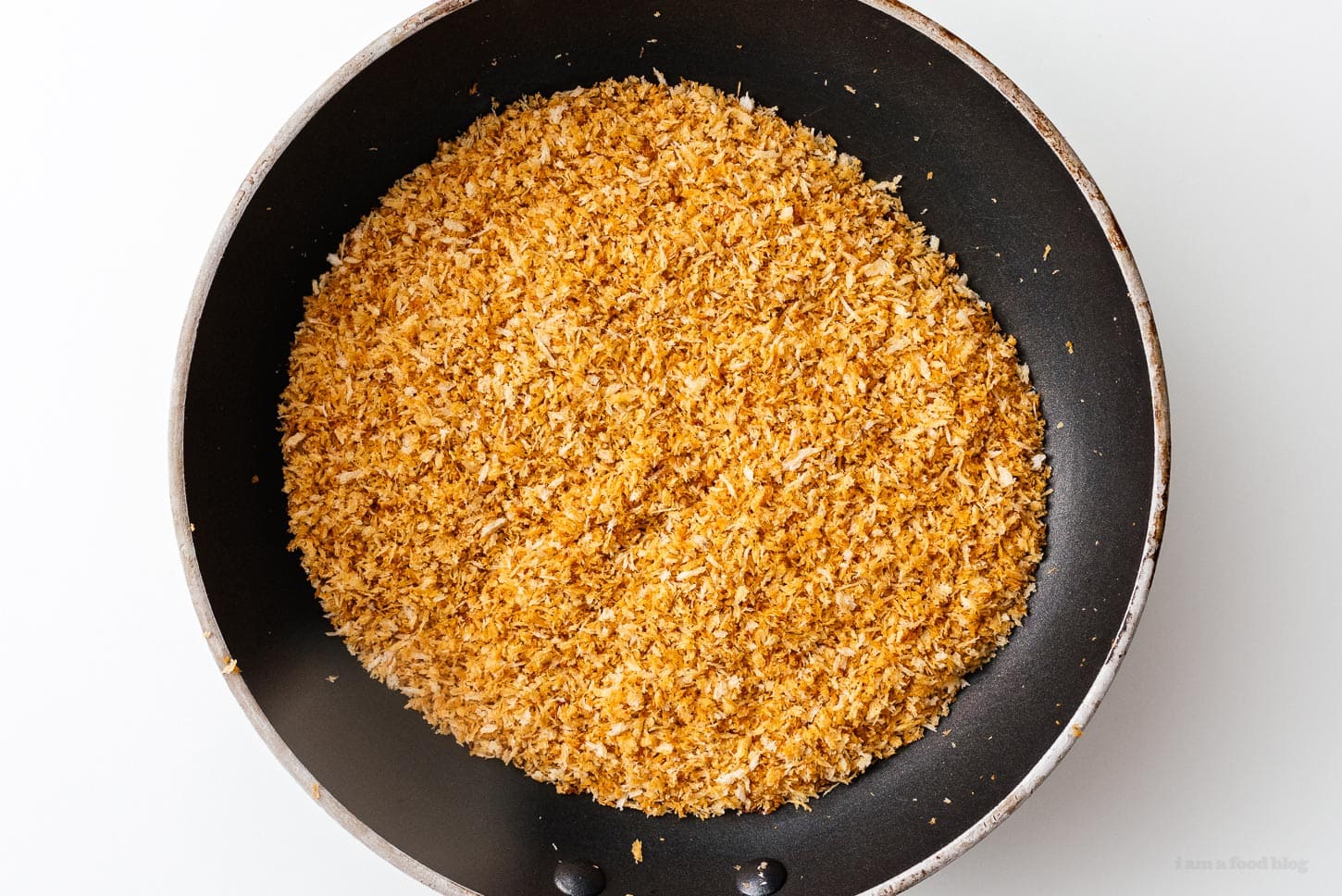
Where to buy panko
Panko is sold in most grocery stores in the Asian aisle but it’s cheaper to buy it at an Asian grocery store. You can also get it online. I prefer Japanese brands of panko, sometimes you’ll see something labeled panko but it looks like regular breadcrumbs. Take a look at the package and buy panko with large, irregular, shards that are flat.
How to set up a katsu breading station
Just like how you bread regular chicken you need flour, egg, and panko.
- Set up three shallow dishes that are able to fit your chicken.
- Put flour in one dish, lightly beaten egg in the next dish, and panko in the last dish.
- Season your chicken with salt and pepper, then using one hand, dip it in the flour, coating both sides. Shake off the excess flour and place it in the egg.
- Use your other hand to turn the chicken in the egg, making sure it’s coated all over. Shake off any excess egg and place the chicken in the panko.
- Using the hand you used to flour the chicken, flip and press down on the chicken to coat in panko, being sure to gently adhere the panko all over. Shake off the excess panko and you’re ready to cook!
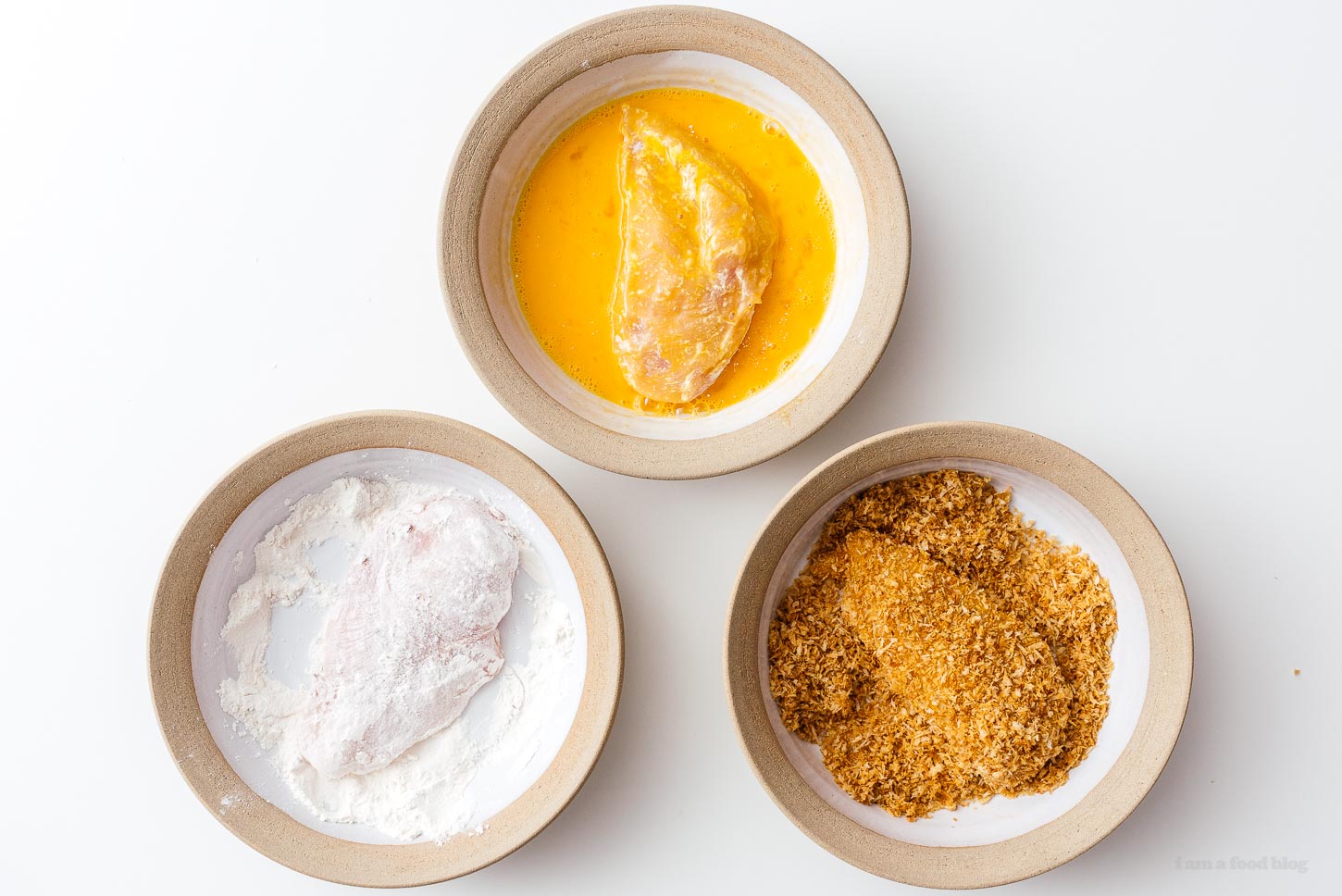
How to cook chicken katsu
Air fried/baked chicken katsu
If you’re air frying or baking chicken katsu you’ll need to toast your panko before coating your chicken. The deeply golden signature color of chicken katsu is part of why it’s so appetizing and if you bake or air fry, there won’t be a lot of color on the panko because it won’t be deep fried. Dry toasting it before hand fixes that! All you need to do is add the panko to a dry pan and toast over medium heat, stirring. Drizzle on a bit of oil and stir until golden and toasty. Just before it’s brown, remove the panko from the pan and place in a shallow bowl to cool completely. From there you just coat your chicken the same as ever.
To air fry: Place the prepared chicken katsu on a rack inside the air fryer and air fry at 400°F for 12-15 minutes or until the internal temperature of the chicken reaches 165°F.
To bake: Heat the oven to 400°F. Place the prepared chicken katsu on a rack and bake for 20-25 minutes or until the internal temperature of the chicken reaches 165°F.
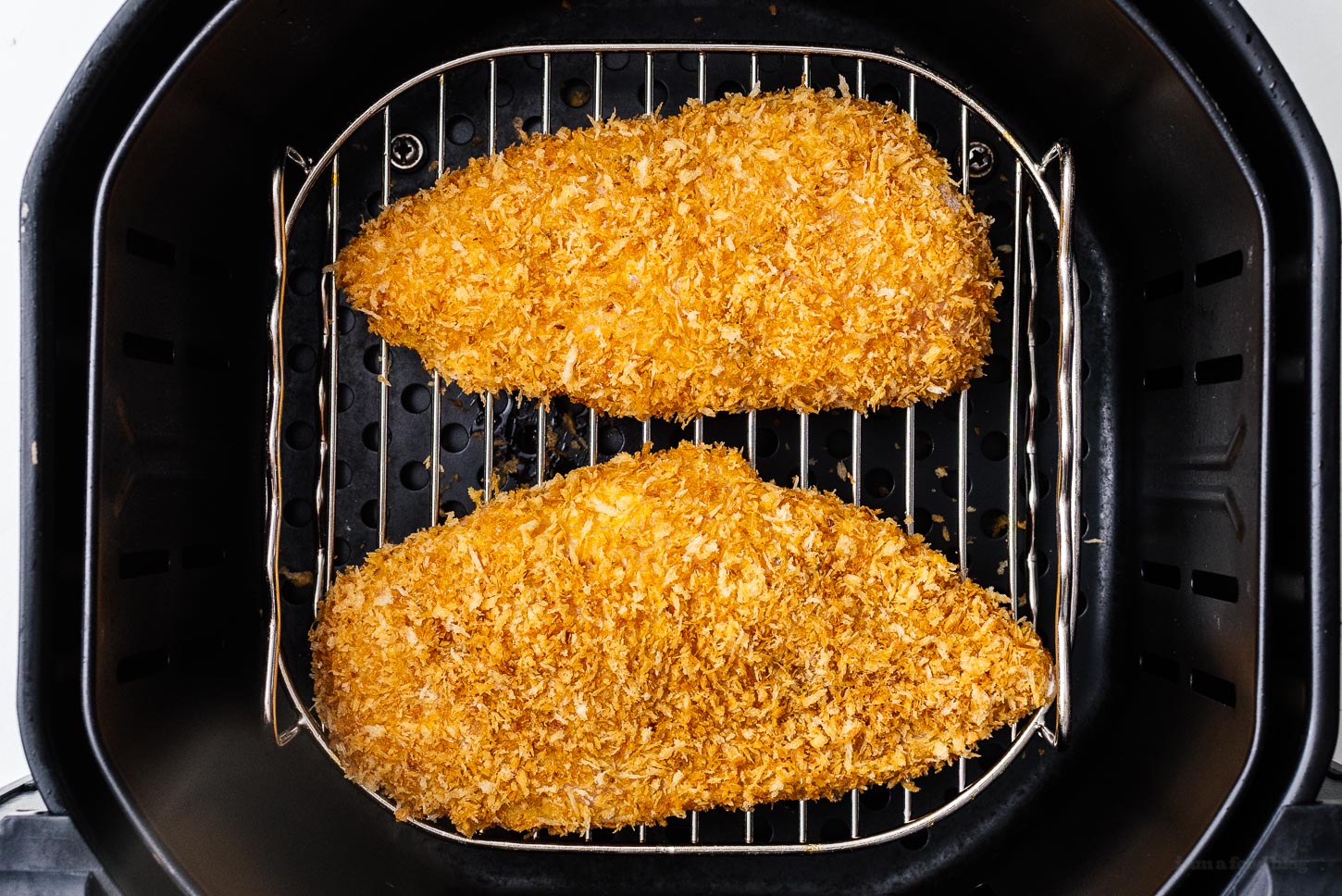
Deep fried chicken katsu
Deep fried chicken katsu will give you the juiciest, most evenly browned katsu, but it’s also the messiest.
To deep fry: Heat up 2-3 inches of neutral oil in a deep pan over medium high heat until it reaches 350°F. Gently place the coated chicken katsu into the oil and fry, flipping once, until golden brown and cooked through, about 2-4 minutes per side.
For perfectly cooked katsu, invest in a instant read thermometer. You can use it whenever you cook meat and it ensures that you’re never eating dry, overcooked chicken breast. The best kind of thermometer is a thermocouple style, but you don’t have to spring for the fancy expensive ones: this one is nice and inexpensive and still super fast.

Chicken katsu sauce
Chicken katsu is usually served with sosu, which is the Japanese transliteration of sauce. It’s a thick, sweet and tangy brown sauce that’s loosely based on Worcester sauce. Made from vegetables, fruits, and spices, there are several kinds and thickness used for a variety of Japanese dishes. The sosu most commonly served with chicken katsu is tonkatsu sauce. It’s thick and mild, and full of umami. You can buy it online, popular brands are Bulldog or Otafuku. If you can’t find it, you can make an approximation of it easily at home.
Chicken katsu sauce recipe
2 tbsp ketchup
1 tablespoon oyster sauce
1-2 tsp Worcestershire sauce
2 tsp sugar
Mix all the ingredients together in a small bowl.
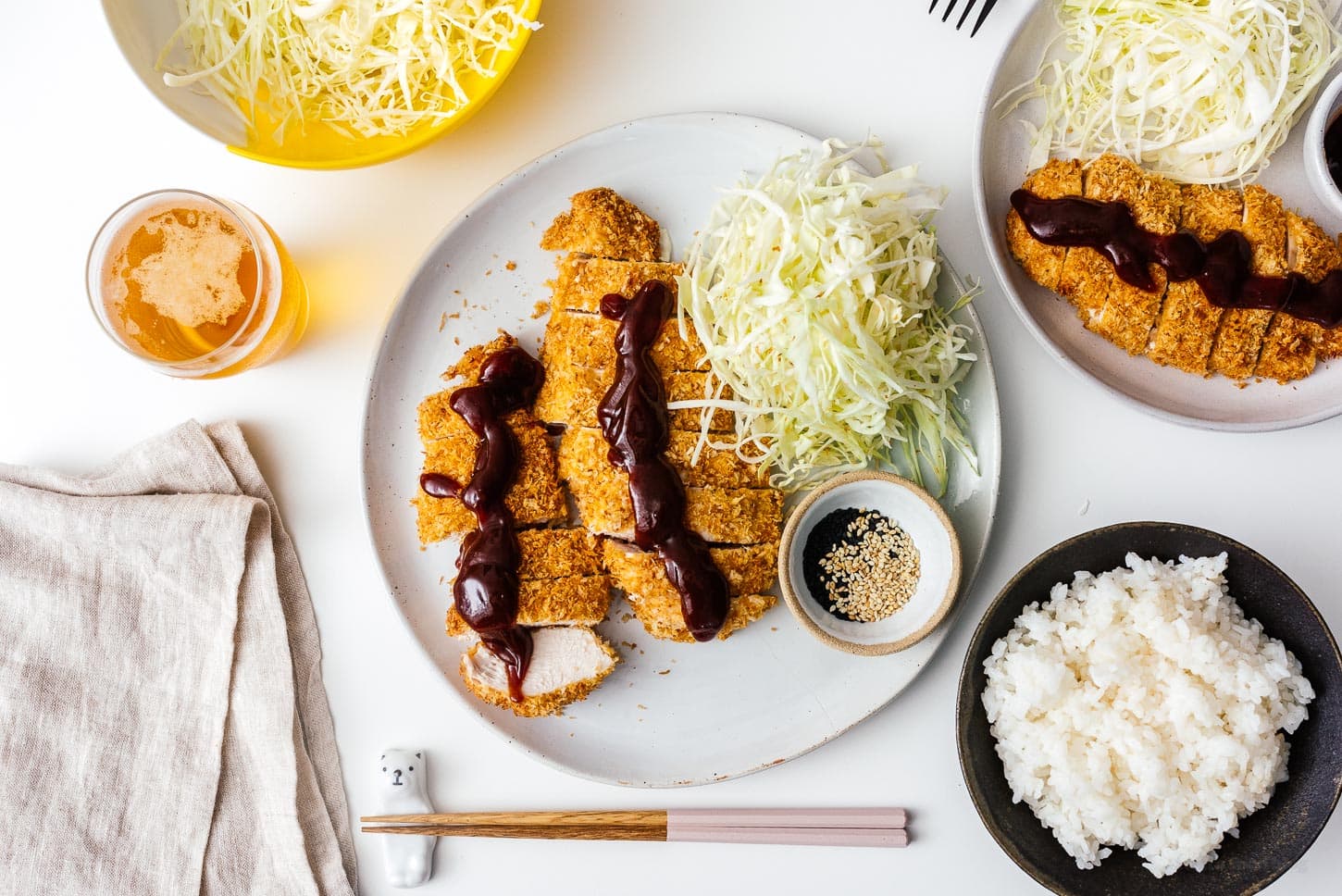
What to serve with chicken katsu
If you want to create a teishoku or set meal, serve up your katsu with fluffy rice, shredded cabbage with Japanese dressing, miso soup, and Japanese pickles!
- Japanese steamed rice
- Soy-vinegar dressing for your cabbage
- Miso soup
- Sunomono cucumber pickles
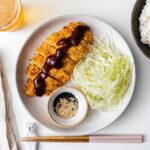

Chicken Katsu Recipe
#wprm-recipe-user-rating-0 .wprm-rating-star.wprm-rating-star-full svg * { fill: #f5a623; }#wprm-recipe-user-rating-0 .wprm-rating-star.wprm-rating-star-33 svg * { fill: url(#wprm-recipe-user-rating-0-33); }#wprm-recipe-user-rating-0 .wprm-rating-star.wprm-rating-star-50 svg * { fill: url(#wprm-recipe-user-rating-0-50); }#wprm-recipe-user-rating-0 .wprm-rating-star.wprm-rating-star-66 svg * { fill: url(#wprm-recipe-user-rating-0-66); }linearGradient#wprm-recipe-user-rating-0-33 stop { stop-color: #f5a623; }linearGradient#wprm-recipe-user-rating-0-50 stop { stop-color: #f5a623; }linearGradient#wprm-recipe-user-rating-0-66 stop { stop-color: #f5a623; }
Ingredients
- 2 chicken breast lightly pounded
- 2 tbsp all purpose flour
- 1 egg lightly beaten
- 1 cup panko
Special Equipment
-
air fryer
Instructions
-
Season both sides of the chicken with salt and freshly ground pepper.
If air frying or baking, toast the panko: Add the panko to a dry pan and toast over medium heat, stirring. Drizzle on 1 tablespoon neutral oil and stir until golden and toasty. Remove from the heat and place the panko in a shallow bowl to cool.
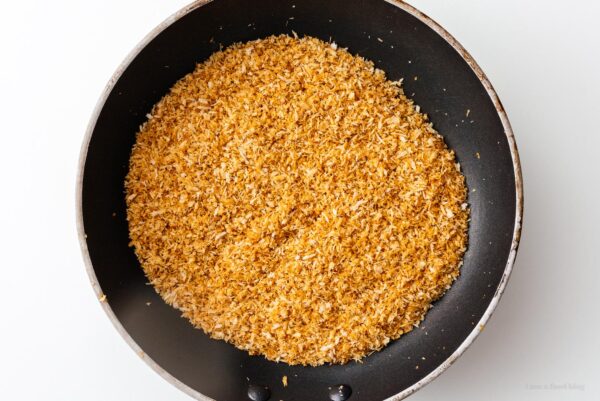
-
Set up 3 shallow dishes, one with the flour, one with the lightly beaten egg, and one with the panko.
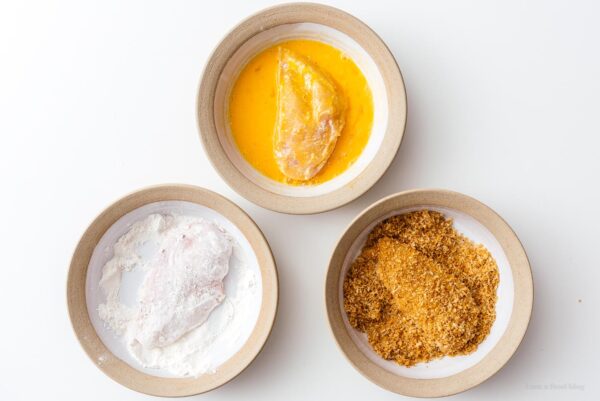
-
Using one hand, dip the chicken into the flour, coating both sides. Shake off the excess flour and place it in the egg.
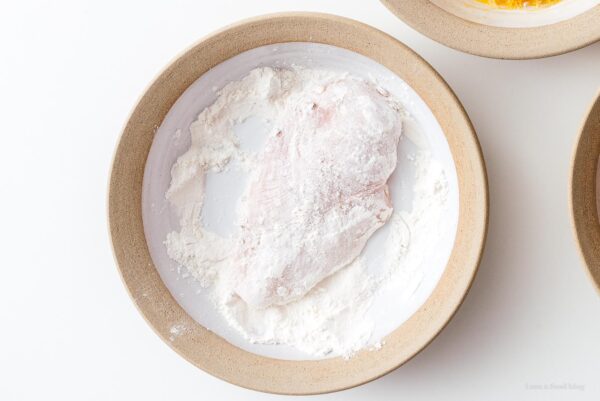
-
Use your other hand to turn the chicken in the egg, making sure it’s coated all over. Shake off any excess egg and place the chicken in the panko.
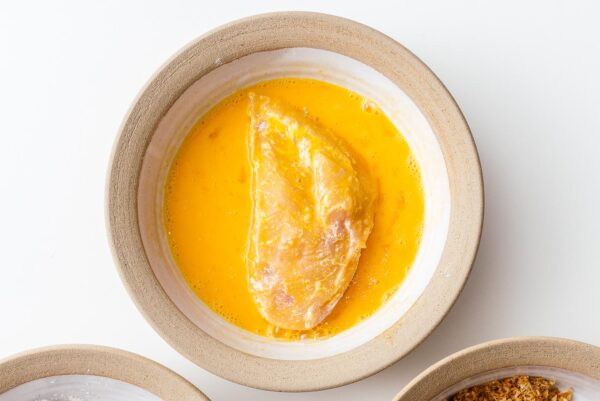
-
Using the hand you used to flour the chicken, flip and press down on the chicken to coat in panko, being sure to gently adhere the panko all over. Shake off the excess panko and you’re ready to cook.
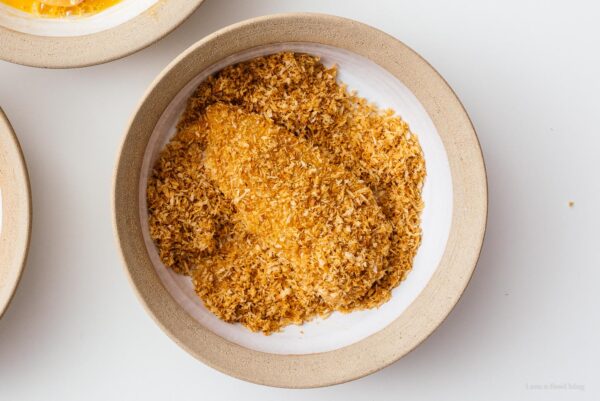
-
To air fry: Place the prepared chicken katsu on a lightly oiled rack inside the air fryer and air fry at 400°F for 12-15 minutes or until the internal temperature of the chicken reaches 165°F.
To bake: Heat the oven to 400°F. Place the prepared chicken katsu on a lightly oiled rack and bake for 20-25 minutes or until the internal temperature of the chicken reaches 165°F.
To deep fry: Heat up 2-3 inches of neutral oil in a deep pan over medium high heat until it reaches 350°F. Gently place the coated chicken katsu into the oil and fry, flipping once, until golden brown and cooked through, about 2-4 minutes per side
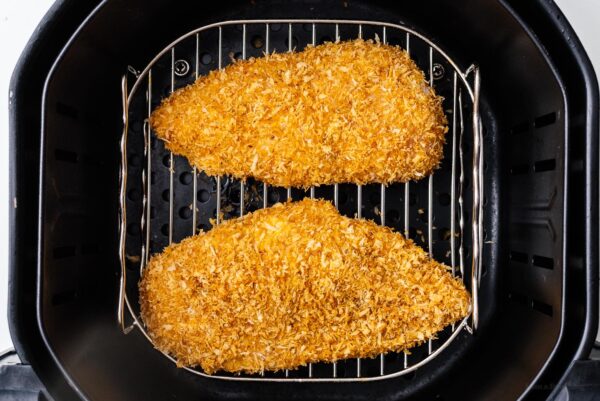
-
After the katsu is cooked, let it cool slightly before cutting it into strips and serving it with rice, shredded cabbage, and katsu sauce. Enjoy!
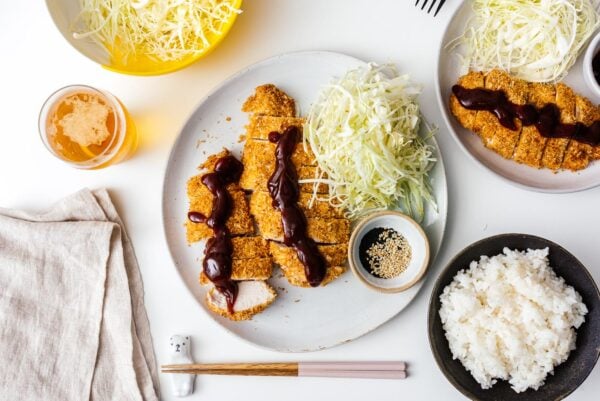
Estimated Nutrition
Calories from Fat 59

